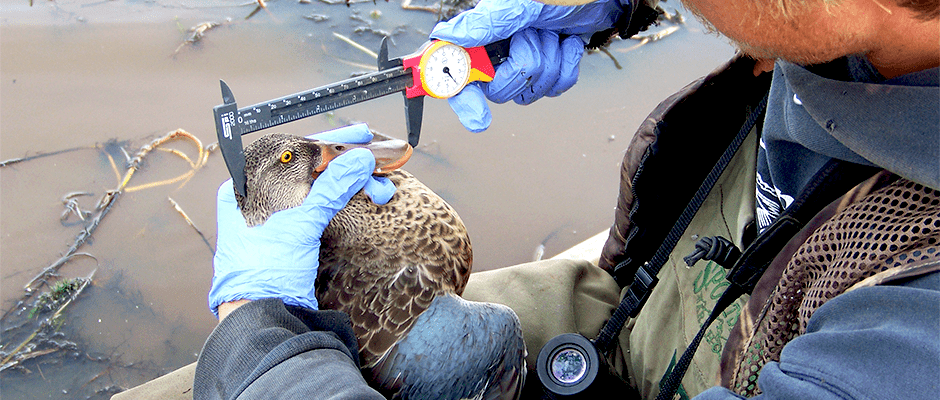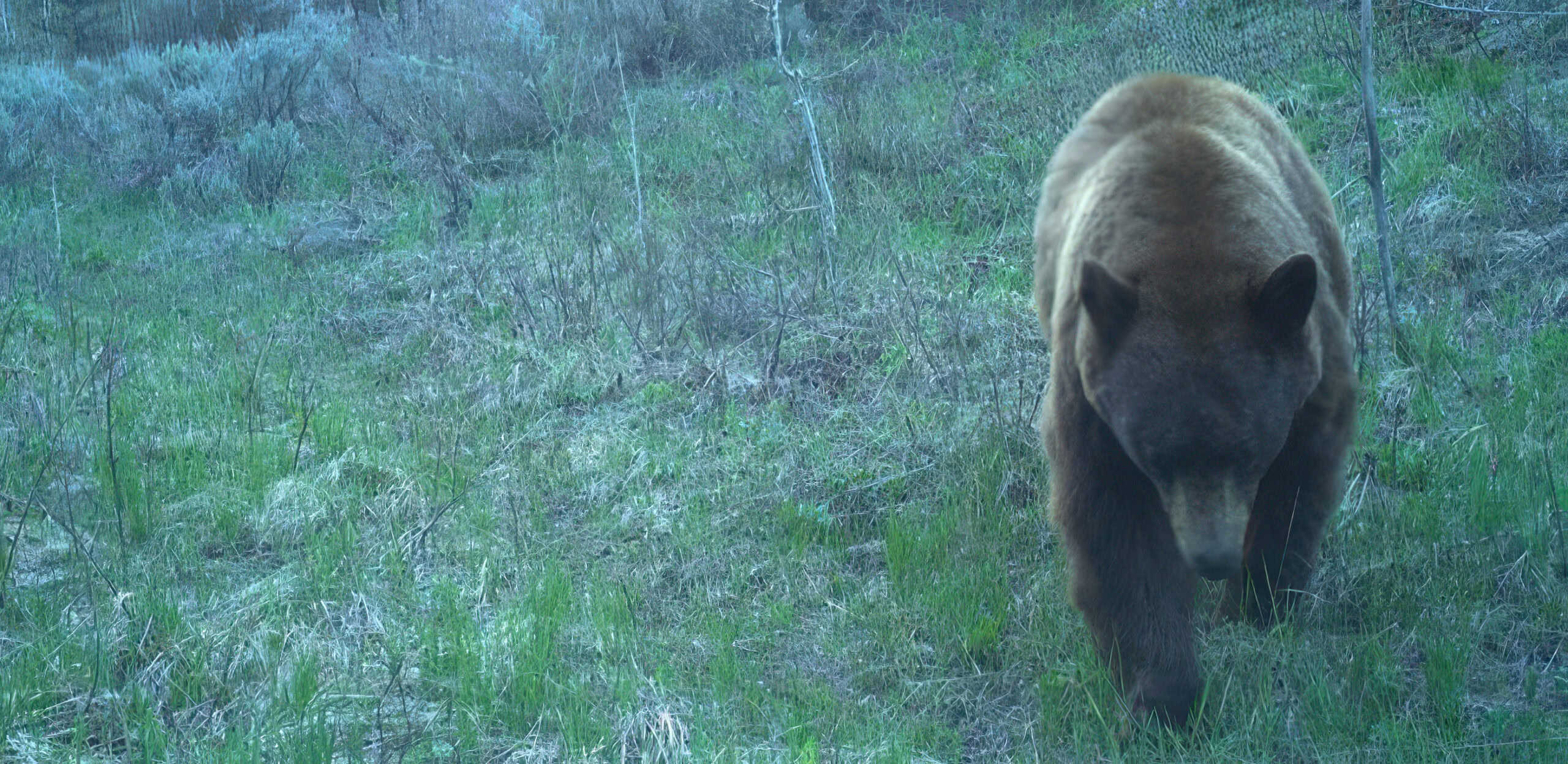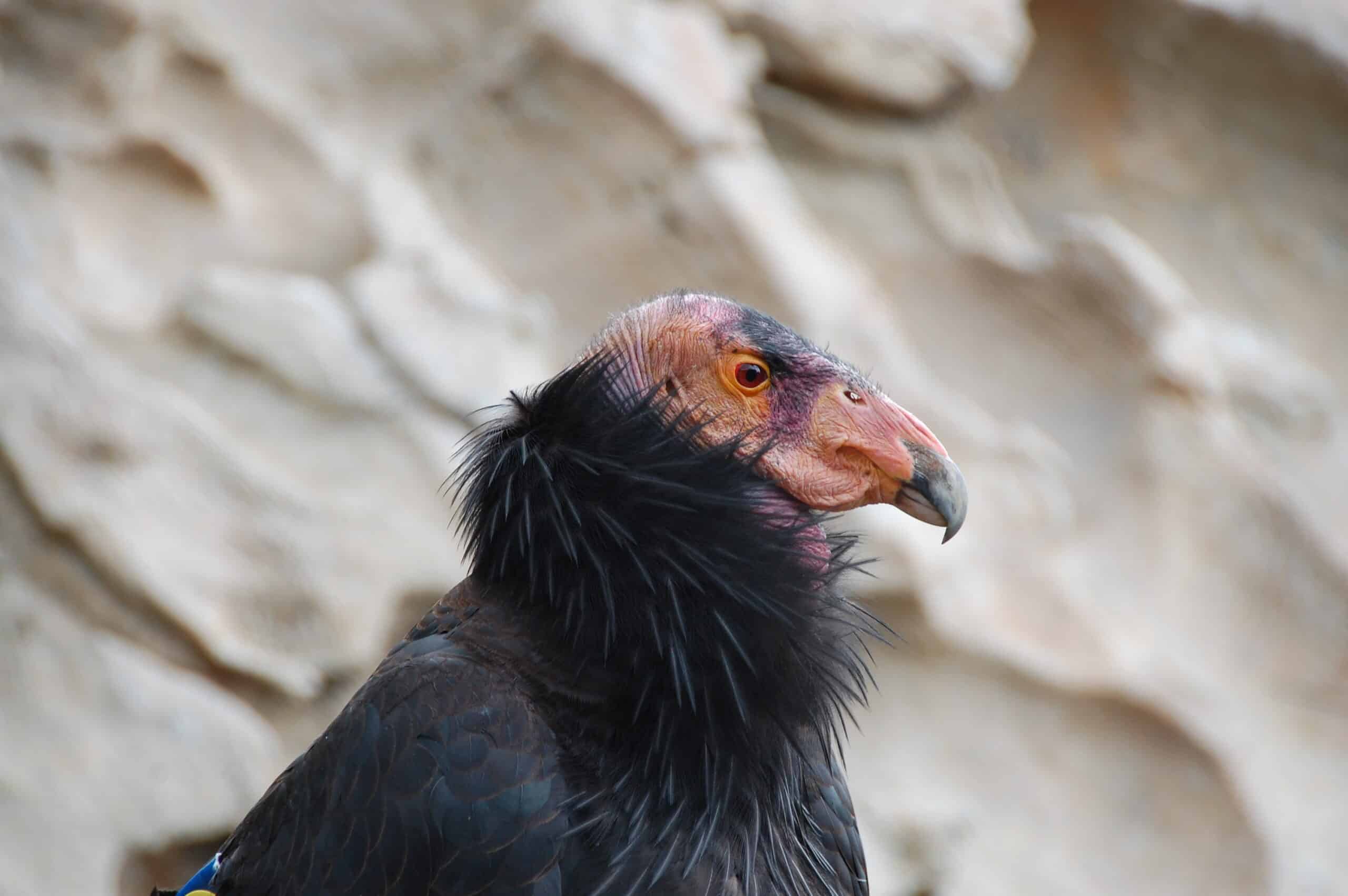Share this article
How seasons affect spread of avian influenza in migrating ducks
The spread of avian influenza viruses in dabbling ducks has a lot to do with the life cycle of the migrating birds as well as the season, according to a new study.
Most avian influenza viruses originate in wild bird species, according to Jonathan Runstadler, an assistant professor in the Department of Biological Engineering and the Division of Comparative Medicine at Massachusetts Institute of Technology. “We believe wild birds are essentially a reservoir for [avian] influenza viruses,” he said.
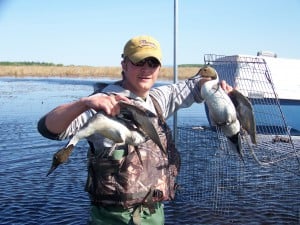
Meixell holds two ducks that he collected from a decoy trap. ©Brandt Meixell
This is especially important to human health within the last 10-15 years with viruses such as H5N1 and H7N9 spilling over from avian hosts to humans. However, wild ducks rarely show clinical signs of the virus, Runstadler says. In fact, when he and his team go out to sample mallards (Anas platyrhynchos), they can’t tell if a bird is infected until they test the sample. Still, despite the absence of visible symptoms, these viral infections could have an impact on the ducks’ reproduction, timing of their migration and various aspects of their fitness.
As part of their study published in the journal Ecology Letters, senior author Runstadler and his team studied if different stages of the ducks’ life cycle play a role in the spread of avian influenza. The researchers spent several years in Alaska banding wild ducks and taking samples, several of which they compared with other influenza sequences from a public database. “[This study] is critically dependent on other scientists doing the same thing we’re doing and studying influenza viruses and sequences by submitting them to the database,” he said.
The team used a computational approach to build and analyze a network of relationships between the viruses in the ducks sampled in Alaska and those in the database.
Transmission of the avian influenza virus can spread in two different ways, according to Runstadler: A whole virus can spread from one bird to another or sometimes, because the influenza genome is segmented, two viruses can come together to create a new virus in a process called reassortment. Influenza viruses can also be spread either between the same species or across different species. “Combining this network with metadata for the sample, such as species and time of year and place of sampling allowed us to look at how frequently transmission events were one: reassortments or nonreassortments, two: whether transmissions were between birds of the same species or different species and three: if transmission events we could infer from the network were occurring within a single season such as summer, winter or fall, or across seasons such as from winter into spring,” he said. With this information, the team wanted to understand how individual viruses managed to survive in the ducks from one year to the next.
What This Means for the Birds
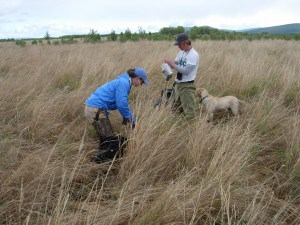
The researchers conduct a spring sampling of duck hens with the help of dogs to find the nests. ©Jonathan Runstadler
After reviewing the data, the team discovered a few trends. For example, as the ducks move farther south in their migration pattern, there tends to be more viral reassortment, more transmission across species and a greater degree of transmission across seasons. This, Runstadler says, relates to how the life cycle of the birds is progressing. In the breeding grounds, they start out as flocks of birds of the same species that interact with one another and spread influenza between one another, but when they reach their wintering grounds, there are more species interacting with one another as well as birds from different regions coming together and bringing different viruses that enable reassortment to occur.
“We think that knowing this and being able to demonstrate this in a quantitative way helps us to at least build accurate models of how a virus is being transmitted across space and time,” he said. “This is an important part of understanding the ecology and evolution of viruses that can help us predict where and how quickly a new virus that emerges will move around the world.” Further, Runstadler says this knowledge can help them identify locations that might need more surveillance than others.
This work was part of an ongoing study funded in large part by a National Institutes of Health program, the Centers of Excellence for Influenza Research and Surveillance. Runstadler, who works with the Mount Sinai led Center for Research on Influenza Pathogenesis, plans to continue studying the influenza virus to understand more about its natural history and evolution.
“I can’t emphasize enough how important the cooperation of colleagues and work everybody else is doing is to the study,” he said. “It was important to have [these people], many as part of this NIH centers group, doing similar things both in the U.S. and around the world. The ability of all of us to share that data is integral for what we’re trying to accomplish.”
Header Image: Coauthor Brandt Meixell takes measurements during the sampling of a northern shoveler. ©Brandt Meixell



